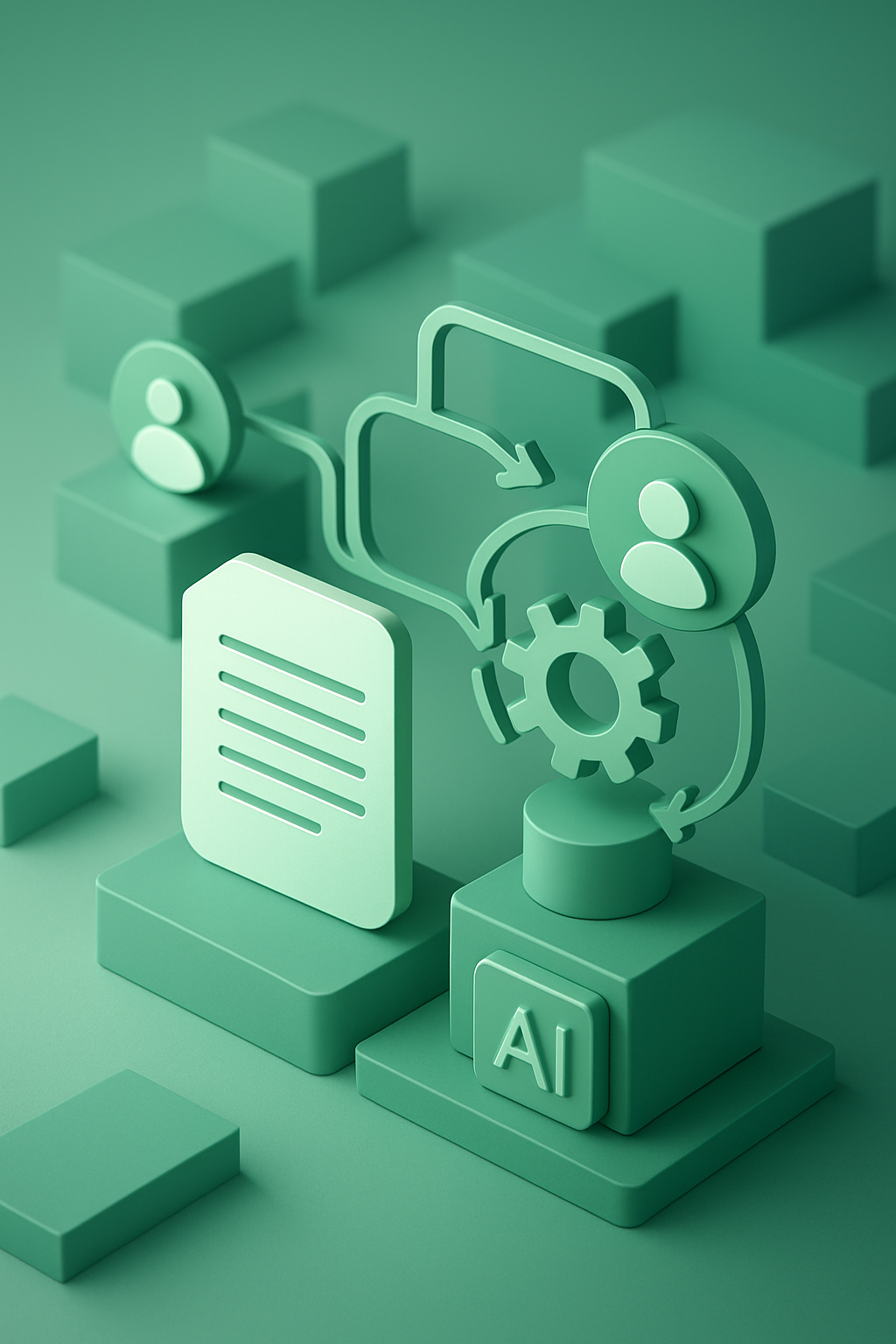Why the Future of Document Creation is About Control, Not Just Automation
In today’s fast-paced business environment, organizations face increasing pressure to produce accurate, compliant, and on-brand documents—often under tight deadlines. Whether it is preparing RFP responses, generating technical reports, or managing compliance-heavy workflows, document creation can quickly become a bottleneck due to its repetitive and complex nature.
For years, document automation was seen as the solution. By using templates and predefined rules, businesses were able to create documents faster and reduce manual work. Yet as workflows grow more complex, the limitations of traditional automation are becoming apparent. The future of document generation is not just about speed—it is about control, adaptability, and orchestration. Companies now seek solutions that combine automation with the ability to manage processes at a granular level, ensuring outputs match their unique standards.
The Role of Automation in Document Creation
Traditional document automation systems rely on static templates and rule-based logic to generate outputs. These tools have helped organizations save time by streamlining repetitive tasks such as contract drafting or proposal formatting. According to McKinsey, automation can reduce administrative work by up to 40%, freeing teams to focus on higher-value tasks.
However, static templates and one-size-fits-all logic are not enough when it comes to complex workflows. Technical documents, financial reports, and compliance files require context, nuanced language, and accuracy that generic automation tools cannot provide. The result is often a draft that requires as much time to fix as it would have taken to create manually.
The solution lies in combining document automation with agentic AI, where intelligent systems not only generate documents but also adapt to each organization’s unique logic, tone, and workflows.
To explore the key benefits of agentic AI , discover our article here.
From Automation to Agentic AI
The Problem with Single-Model AI
Generative AI has made it possible to create documents faster than ever. However, many solutions still operate as a single “black-box” assistant, producing outputs without offering transparency or control. For industries that demand compliance, such as finance or healthcare, this lack of oversight is a significant risk. It is not enough to simply automate document creation; businesses need to know how and why each output is generated.
The Power of Multi-Agent Systems
Agent AI introduces a new paradigm. Instead of relying on one model to handle everything, businesses can orchestrate multi-agent workflows where each AI agent is assigned a specific role. One agent gathers data, another drafts the content, a third ensures compliance, and a final agent formats the output. This collaborative approach, often referred to as agentic AI, mirrors the way human teams operate—dividing responsibilities to ensure accuracy, quality, and speed.
A recent PwC report shows that multi-agent AI workflows can improve efficiency by over 30% compared to single-model solutions. By breaking down tasks into specialized roles, companies gain both agility and control over their document generation process.
The Importance of Control
Why Control Matters
The challenge with most AI solutions is that they produce generic outputs with little room for customization. Without the ability to define logic, prompts, and templates, businesses risk sacrificing brand consistency and compliance for speed. This is particularly problematic for operations managers or bid managers, who must ensure that every document adheres to strict internal and external standards.
The Solution: Oversight + Automation
Control allows organizations to combine the strengths of AI with human oversight. By managing how each AI agent operates, companies can create tailored workflows that reflect their internal processes. This includes defining document structures, customizing tone and style, and applying compliance rules.
A report by Lucidpress indicates that companies maintaining brand consistency can boost revenue by up to 23%. Control ensures that document automation tools generate outputs that are not only fast but also meet the organization’s quality benchmarks.
Streamlining Document Workflows with Agentic AI
The Problem with Manual Collaboration
Document creation is rarely confined to one team. Proposals and technical documents often require input from sales, legal, operations, and marketing departments. When handled manually, this cross-department collaboration becomes slow and prone to errors due to version control issues and endless feedback loops.
The Solution: Orchestration
With agentic AI, businesses can build workflows where AI agents work in parallel, just like a well-coordinated team. For example, one agent can compile data from past RFP responses while another drafts a proposal and a third checks compliance. This orchestrated approach not only accelerates document generation but also ensures that the final output meets all requirements.
By combining document automation with multi-agent systems, organizations can achieve a balance between speed and quality. Each agent contributes its specialized output, while managers retain complete oversight of the process.
Automating RFP Responses and Technical Documentation
RFP responses and technical documentation are among the most labor-intensive document types. Drafting proposals often takes days or weeks, involving repetitive work that drains resources. AI document generation can reduce this time by up to 70%, enabling companies to respond faster to opportunities and improve win rates.
Technical documentation benefits just as much. Whether it is creating detailed reports, compliance documents, or manuals, agent AI systems ensure accuracy and structure while handling the repetitive formatting and drafting steps. This frees up skilled staff to focus on higher-level strategic tasks rather than repetitive content creation.
Improving Document Standardization
Standardization is another area where document automation and agentic AI add value. Without consistent templates and rules, documents can vary in quality and tone, creating a fragmented brand image. AI-driven workflows ensure that every output follows the same structure and style, no matter which department generates it.
This standardization is particularly important for organizations with distributed teams. By applying predefined templates and AI-managed logic, companies create a single source of truth for all their documents, improving both efficiency and internal collaboration.
The Future of Document Generation
The future of document generation will be defined by a hybrid model that combines automation, orchestration, and control. Businesses will move away from single-model AI solutions and embrace multi-agent systems that can adapt to different tasks and rules.
According to McKinsey, AI has the potential to add up to 4.4 trillion dollars to the global economy, but only if organizations can strategically integrate AI into their workflows while maintaining oversight.
The next evolution is not about replacing people with AI, but about enabling people to manage AI agents as they would manage a skilled team. This shift will define which businesses gain a competitive edge in the years ahead.
A Note on Thinkeo’s Approach
Thinkeo is pioneering this shift by enabling companies to build agentic AI workflows that balance automation with control. By orchestrating specialized AI agents for different stages of document creation, Thinkeo helps businesses accelerate document automation while maintaining oversight on quality, tone, and compliance. This unique combination of orchestration and transparency ensures that companies get both the speed of AI and the confidence of human oversight.





.png)